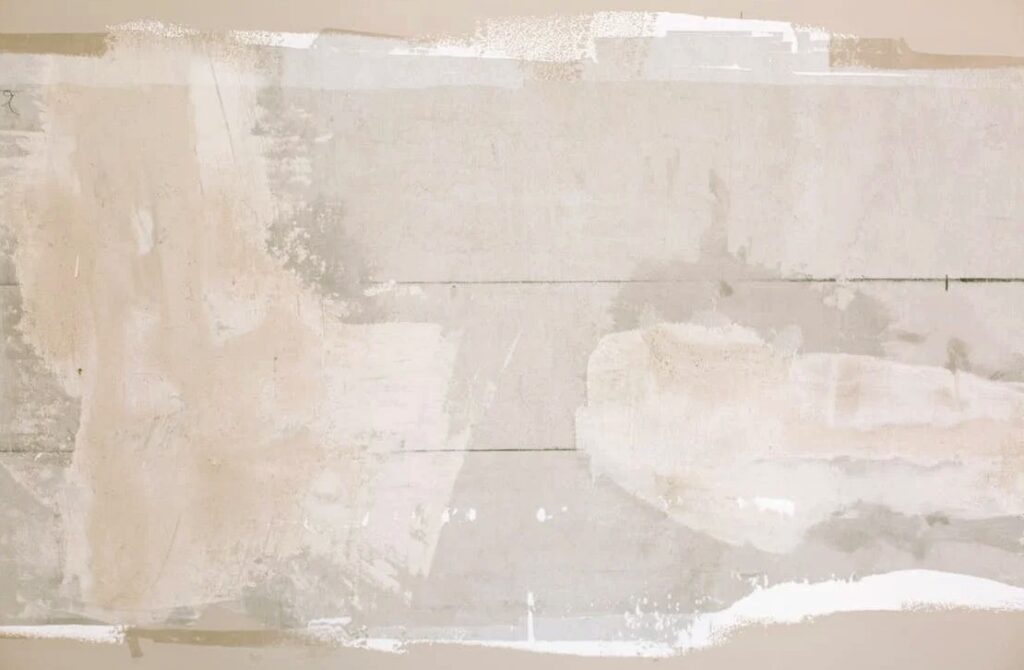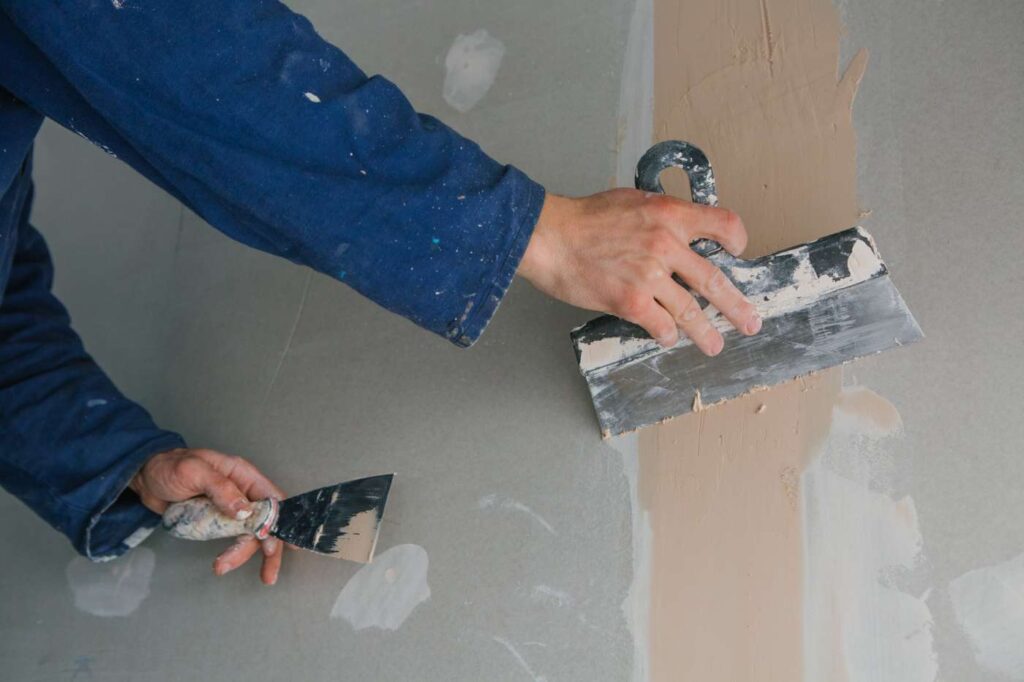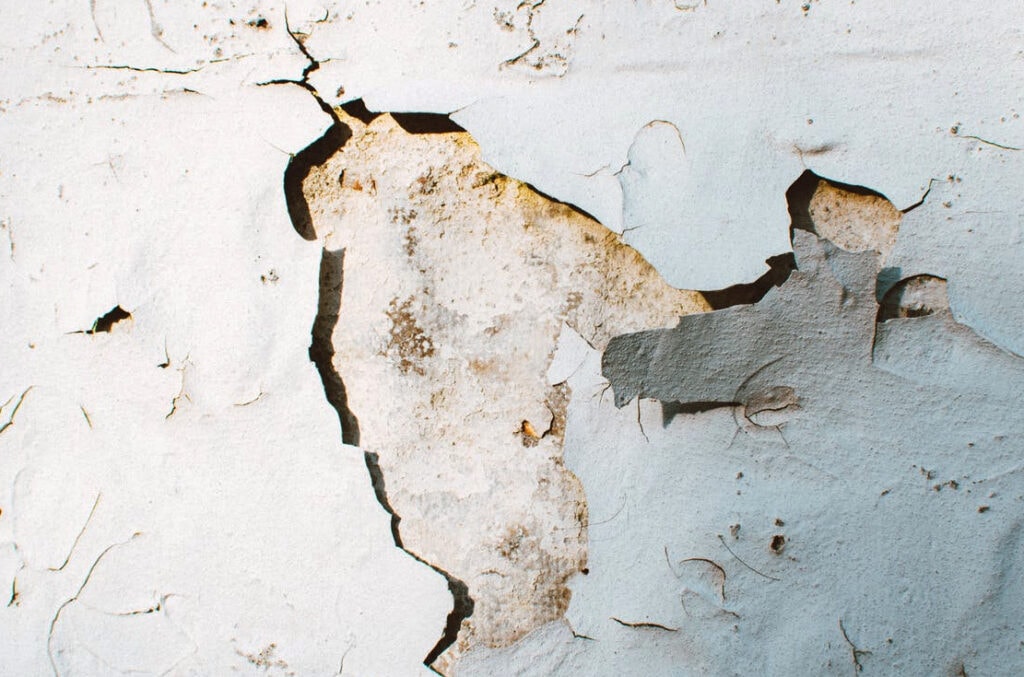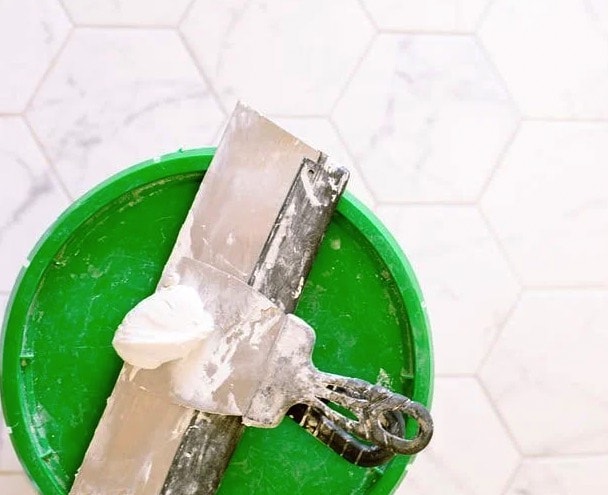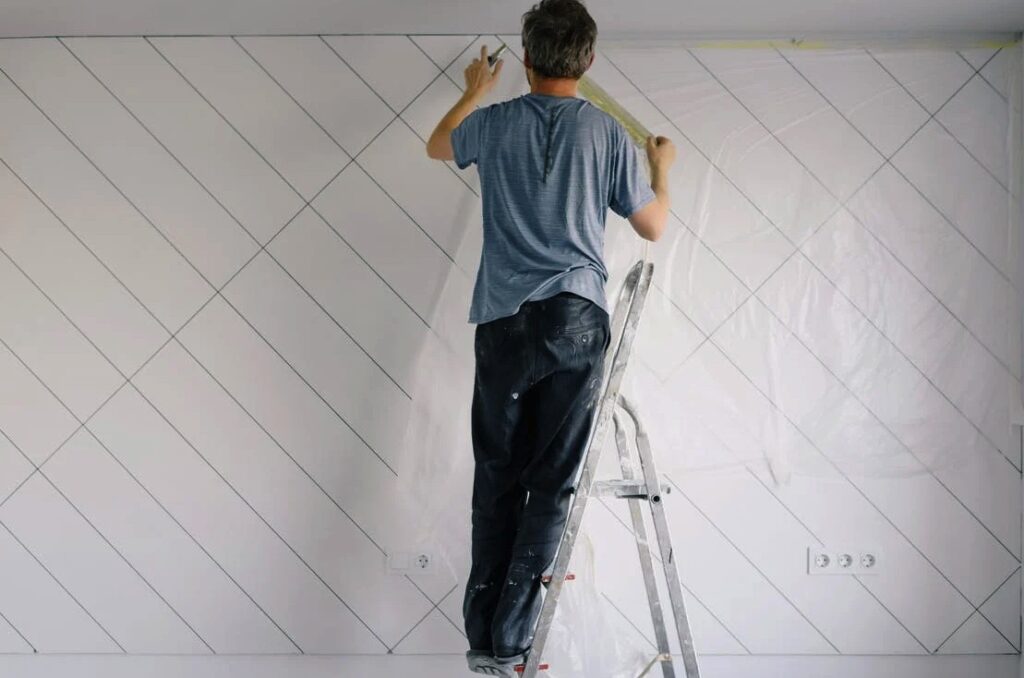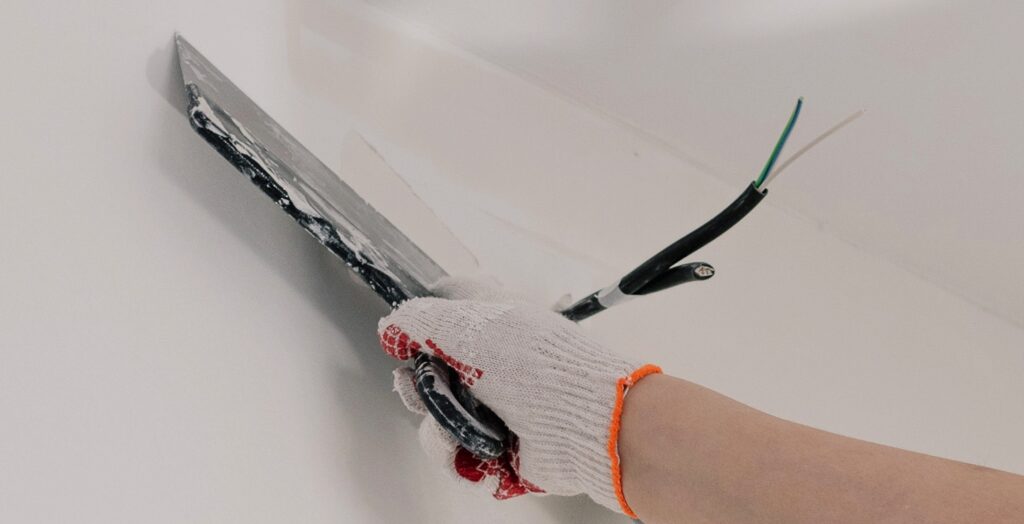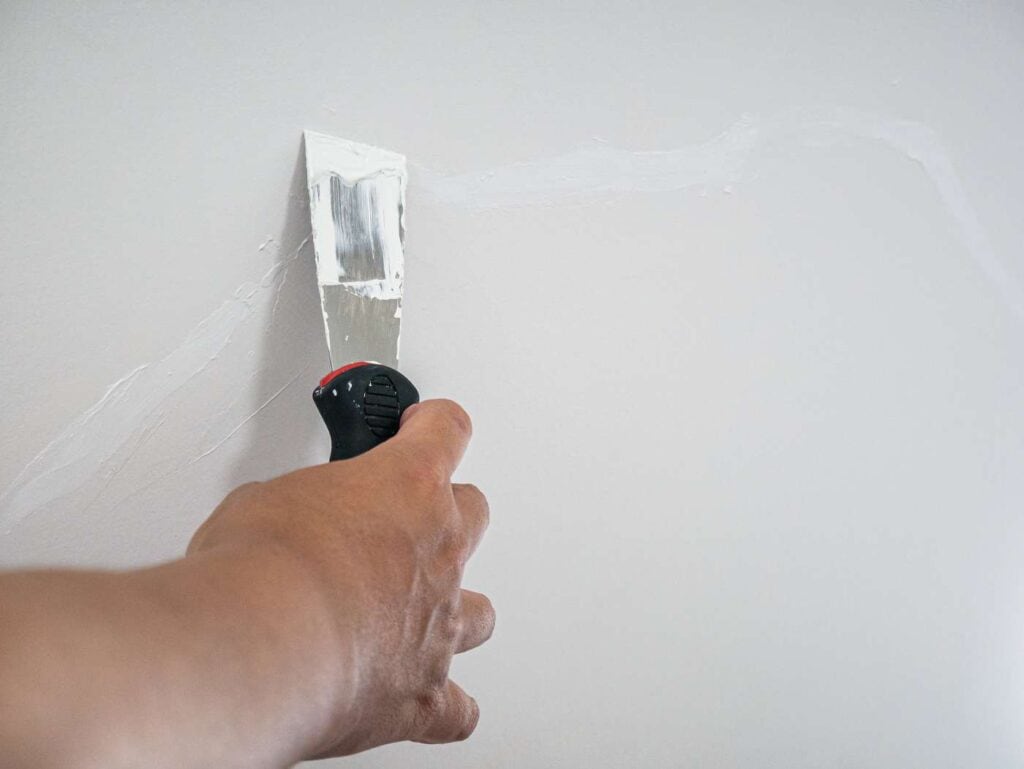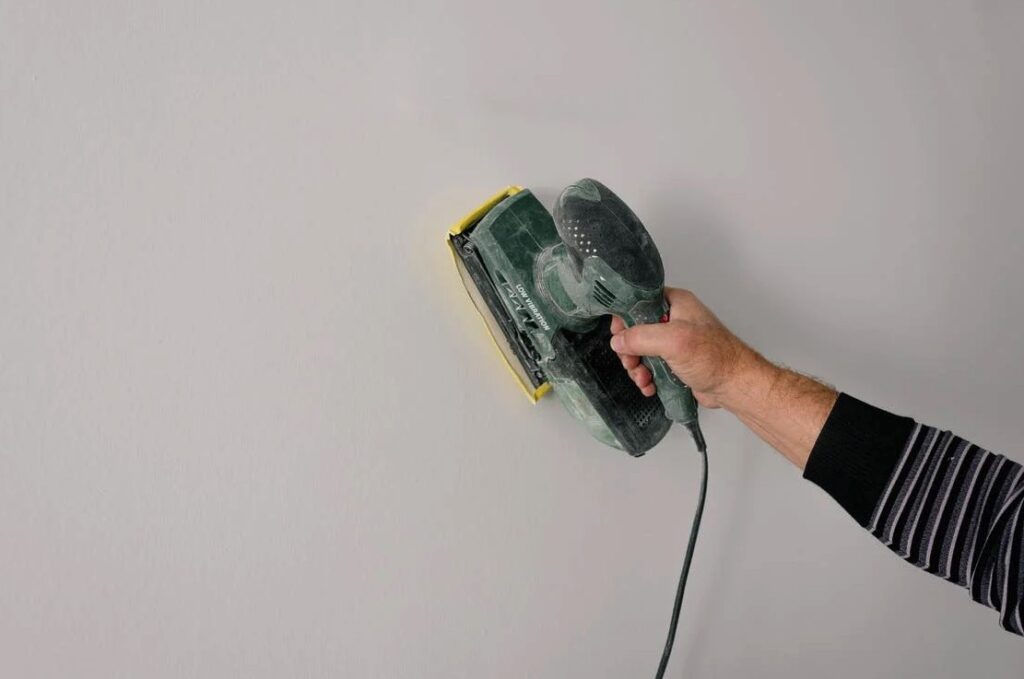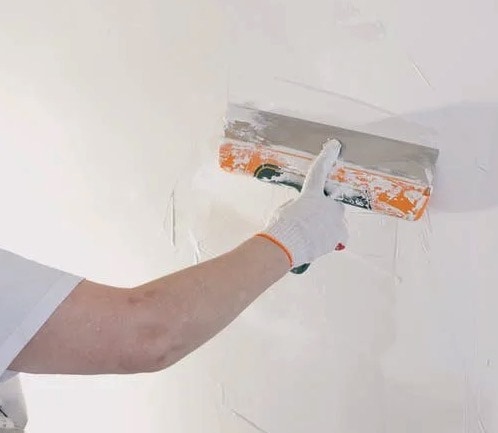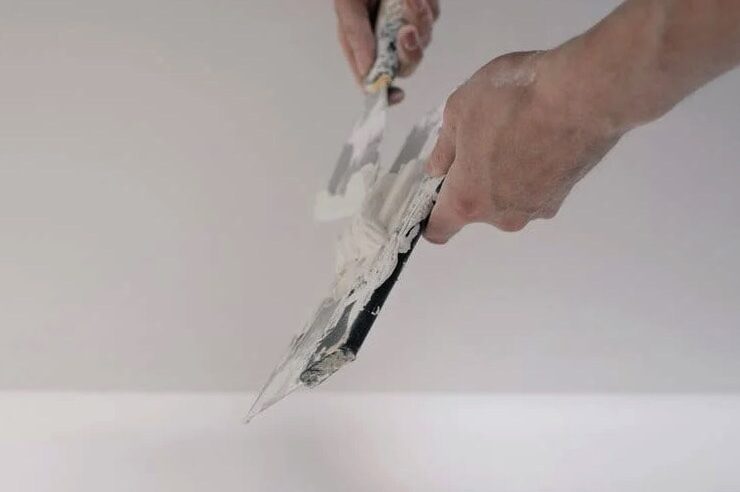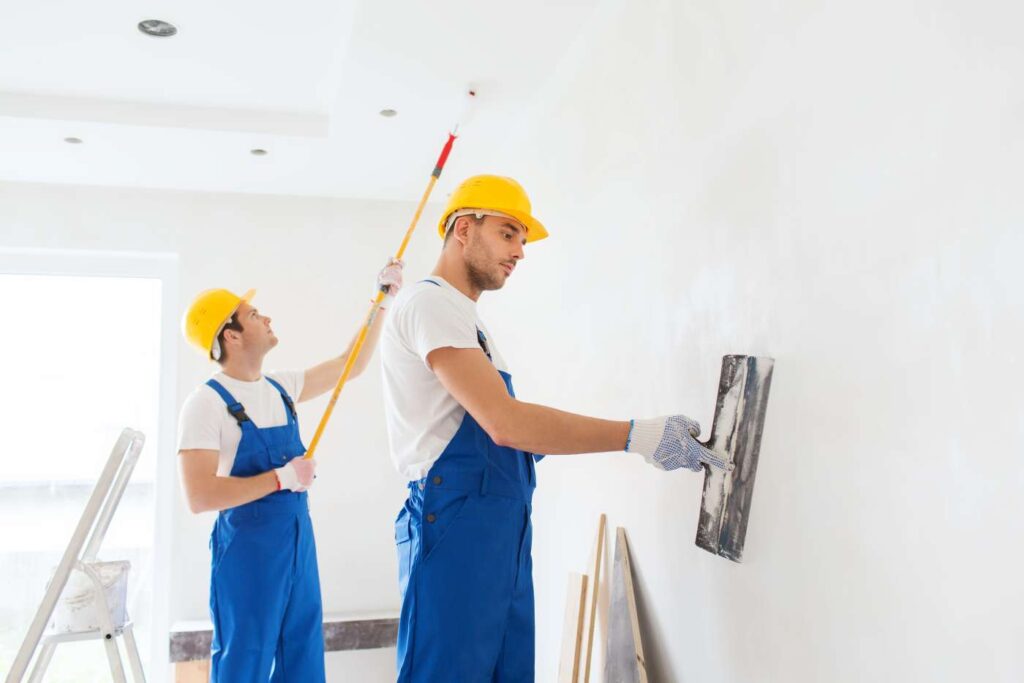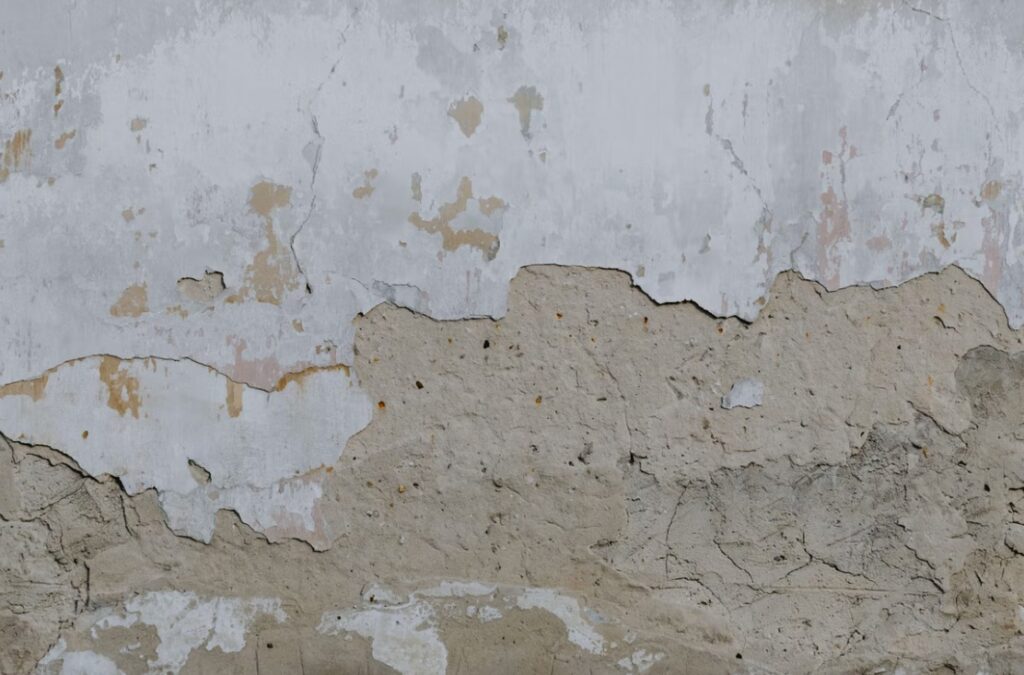Walls, floors, and roofs are the next items on the construction crew's agenda once the house's framework is in place. In many cases, plastering is utilised to even out the rough edges.
Whether you are adding on, remodelling, or building your own home from the ground up, the value of quality plastering work cannot be overstated.
Plastering is one job that you should never do on your own since you won't get a professional outcome. Since doing so successfully demands skill, it should be handled by a seasoned professional.
One of the most important reasons why plastering must be done precisely is that it provides the surface onto which the rest of your wall decorations will be applied.
It doesn't matter what you do to the walls, you won't be able to disguise the poor quality of the plastering.
If you wish to draw attention to the walls and use the trendy bold and dazzling paint colours, this will only highlight the plastering defects even more.
Plastering a wall allows you to accomplish many things that wouldn't be possible otherwise.
As a coating material, plaster was commonly used for walls and ceilings. It helped architects and builders create beautiful, functional spaces indoors and out.
Plastering also acts as a form of soundproofing, therefore having it done properly is important. If you plaster well, you'll have a perfect wall for many years to come.
Since the invention of drywall, plaster has largely been phased out. If you have plaster put up, your home may look beautiful and have the ideal ambience for any event. Plastering will increase the value of your home. In this article, we'll talk about plastering and the benefits it may bring to a home.
How Crucial Plastering Is
If you want to take advantage of lockdown and utilise it to do some house repair, you could need the help of a plasterer. The golden guideline is to hire an expert to do the plastering.
We take pride in our homes and want them to look their best for visitors. There are several ways to achieve this, but one of the most important is to plaster the walls.
Keep in mind that you will be looking at the results of your plastering for years to come, and that uneven, improperly plastered walls are not exactly what anyone wants to look at every day. An experienced plasterer can accomplish an excellent job.
You want the walls of your recently constructed extension to be smooth before the final plastering phase is applied, so that the finished product doesn't look shoddy. Plaster can be applied straight to the plasterboard in newly constructed buildings.
Plasterers often have to resort to fashionable stilts in order to reach ceilings that are finished after walls. Doing so while still being productive is an art form unto itself!
If you're remodelling, you have some leeway in the procedure you follow. A wall, for instance, may need to be prepared for plastering before any work can begin; the time required for this may vary depending on the wall's current condition and the materials it is made of.
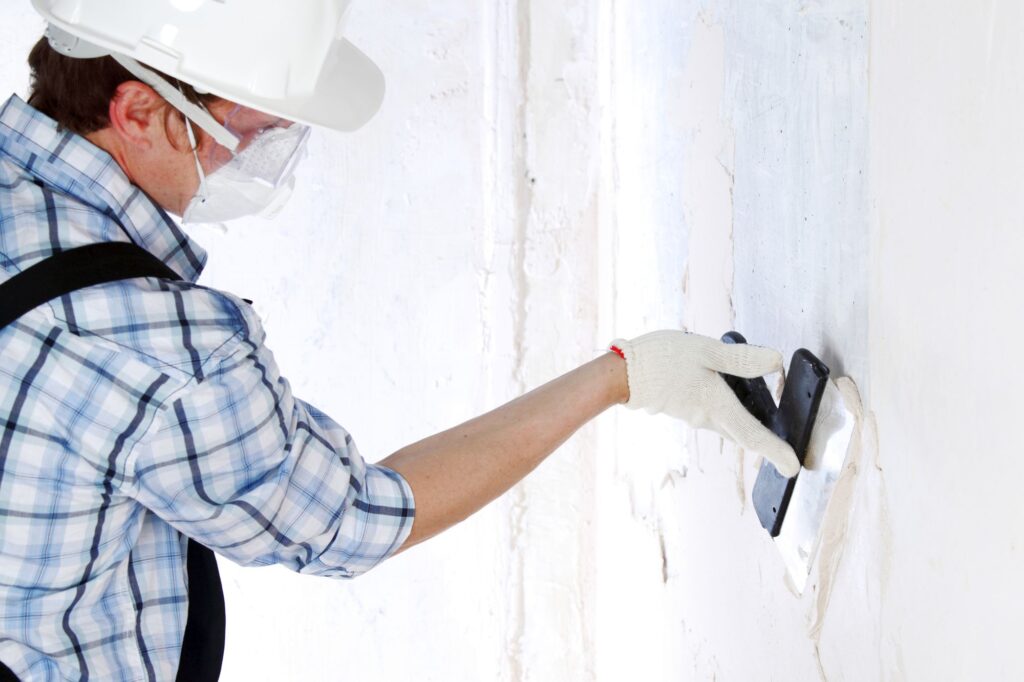
Plastering—what is it, exactly?
Plaster is used to even out rough spots on walls and ceilings when building a home or other structure. These include, in appropriate amounts, water, sand, cement concrete, and lime.
Plaster is a versatile coating that can be used to beautify and preserve walls and ceilings inside a building. Plaster can be used to create a wide variety of architectural mouldings, including ceiling roses, cornices, and corbels.
Plasters usually consist primarily of lime or gypsum. Dry powder is the typical ingredient in plaster. It can be applied after being combined with water to form a thick paste.
The term "plastering" describes the method of adding plaster to architectural elements like walls and ceilings. These are the most popular plasters for building:
- Plasters made of cement typically contain water, sand, and cement. The majority of their use is on preexisting masonry projects. The walls, amongst other locations.
- Since lime plaster is permeable, air may easily circulate through the walls. There is water and other elemental basics available.
- Plaster made from gypsum is valued for its durability and resistance to heat and force. Gypsum plasters have excellent insulating properties. In its simplest form, it consists of water and calcium sulphate.
To what end do we drywall interior walls?
Plastering is an essential job that may transform your home's appearance and increase its value by a factor of 100. The plaster enhances the wall's aesthetic value.
Plaster that has been mixed with water creates a smooth surface that is more aesthetically pleasing and, as a result, raises the value of your home. This method will help your walls seem great and your interior design will be immaculate.
The gypsum used to make these plaster goods is so water-soluble that it is often referred to as "plaster of Paris."
When compared to other finishes, what advantages does plastering have?
- Plastering a wall makes it more sturdy and provides a smooth, professional finish. It is essential to monitor the reaction of the plastering during the process. As a result, the bond between the walls will strengthen.
- You can plaster your walls and then paint or draw whatever you like on them. When you use plaster, you can give your home a one-of-a-kind look by including different textures and depths. This is a fantastic way to put your personal stamp on your living space and make it feel more at ease and welcoming. You have a wide range of options available to you in terms of textures and coatings from which to construct your personal aesthetic.
- This facilitates the painting process on a flat surface. It will look better once it's painted.
- One of the benefits of using plaster is how simple it is to put up. You don't need specialised tools or extensive knowledge to accomplish this. This makes it an excellent option for homeowners who are trying to save money while yet modernising their homes. You won't have to hire a professional and can save money on supplies. This is a good option for folks who want to make changes to their homes on their own.
- When you plaster a wall, you can create interesting patterns and textures.
- The process moves along more quickly, and you can rest assured that everything will be completed on time.
- Incredibly clean and safe plastering
- The likelihood of surface cracking decreases, and a beautiful finish is left behind.
- Many older homes have their original plaster, meaning they may stay in great shape with little to no work. Dry wall is easily damaged and can crack if pounded with a hammer or piece of furniture too firmly. It's vulnerable to a number of hazards, including water and fire. It can withstand flooding and flames, albeit the latter doesn't pose as much of a threat. Minor stress cracks can appear in plaster over time. Usually the fault lies with the installation. Experts in the field of plastering should not be avoided. Plaster is ideal for public buildings that need to last for decades, if not millennia. This includes places like libraries and government buildings, as well as places like universities.
- Plaster is easy to keep tidy once it's been put up. Fine dust may be left behind after the plaster has settled. This makes cleanup a lot more difficult. Wet plaster is applied to a wall with a blue board. After it dries, it remains in the spot where you applied it.
- Versatile. For this wall renovation, we make use of plaster's adaptability. It can make an accurate facsimile of drywall in terms of texture and look. Fireplaces, decorative vents, ceiling tiles, and archways are all excellent candidates for plaster finishes. Homeowners can give each part of the house a unique look and feel from the inside and out.
Why Hiring a Professional Plasterer Is the Best Option
Plastering a wall is an art that requires dexterity and skill. That's something you ought to know.
However, mastery is possible, it just takes effort and time. Plastering is a reliable and long-lasting method for giving walls a finished look.
Plastering your walls will not only make them seem better, but it will also reduce noise and preserve them.
They Have Had the Appropriate Training
Plastering is a skill that is not shared by everyone.
That's why you need to get the right training and experience. If you want things to go wrong, hiring a competent wall plastering contractor is your best bet.
Plasterers with the necessary training and experience have been responsible for this job for quite some time. They are quite competent in carrying out the task at hand.
Substances Suitable for the Task
Selecting the right plastering materials is a challenging task that calls for a great deal of expertise. The right material will decide the beauty and the cost. Plaster may be a real pain if you pick the wrong kind.
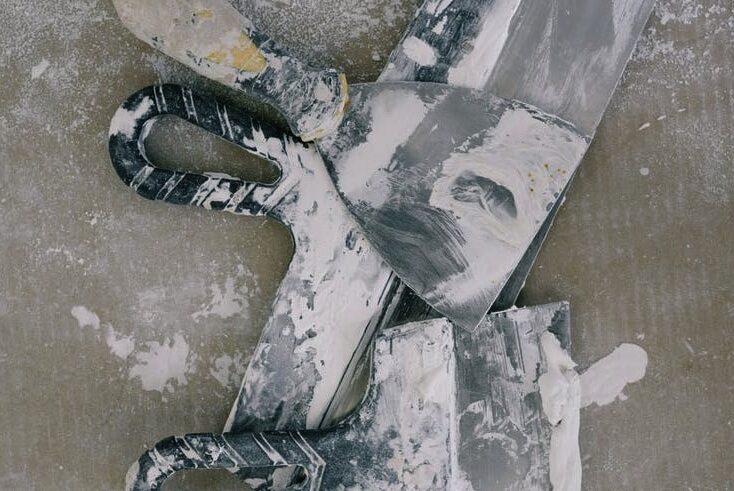
Fears about Personal Safety
Take extra care when dealing with wet materials, on ladders, or near live electrical wires. Plasterers have been trained to do this safely and professionally.
Cost-Effectiveness
If a friend of a friend can plaster the walls, why should we pay a professional? Unfortunately, many home service businesses terribly improperly plaster the wall in order to decrease costs. Consequently, they drive up costs and aggravate you in different ways.
Plastering is a job that is best left to professionals, who can get it done efficiently and at a price that is within reason. As an added bonus, they can tidy up after themselves. Therefore, you should consider hiring an experienced plasterer. In this way, you can send out the project without any doubts or problems.
Multiple Options for Plastering Services
Due to time constraints in modern life, most homeowners prefer to engage professionals to carry out these tasks. However, some professional plastering service providers unfortunately charge a great deal due to the huge demand for their services in the home improvement industry.
Don't forget about financial constraints when seeking out a plastering expert. Plastering jobs are distributed among specialists with specialised skills and knowledge. Remember that no matter what, a client will expect nothing but the best results.
Take a look at these examples of professionally plastered spaces:
- Randomly Smashing Pebbles in a Rendering
- Construction of a Damp Course for Coving
Special Plastering Materials
The construction industry has been profoundly influenced by the advent of cutting-edge equipment, resilient building materials, and boundless creative potential in the realm of design.
Because they provide alternative plastering materials, they have also altered the plastering market.
Common plastering materials include cement or aggregate, lime, water, sand, and sandpaper.
Because of recent technological advancements, you may now discover unique and long-lasting plastering materials such as;
- Gypsum is transformed into gypsum plaster by heating it to 170 degrees Celsius. This plaster is then hardened by combining it with water.
- Asbestos, marble powder, and cement can be used to create a stunning marble finish for plaster.
- Acoustic plaster is made by mixing gypsum with a cement mortar of the same thickness, in this case 6 mm.
Skimming in Plastering: What Is It?
The process of skimming is one of a kind in the world of wall finishing. Even while it's commonly believed that skimming is a different skill altogether, it's actually only a technique used in the plastering process. During skimming, a very thin layer of plaster is put, as opposed to the thicker covering used during plastering.
The technique's complexity stems from the fact that it is often used to refurbish an already-existing surface or one that has been previously plastered. The goal of the skimming process is to leave the surface looking smooth. But if you try to do it on your own, things can go horribly wrong. Therefore, it is prudent and safe to get a plastering expert to do the skimming.
A skim coat, a white coating applied by a specialist to smooth the surface, is used for this purpose. They can always paint it when they get around to it to make it look nicer. Below is a list of the benefits of skimming when plastering.
- makes the surface more appealing
- It's a great way to get walls and other surfaces prepared for new coats of paint.
While plastering is done on a brand-new surface, skim coating is used to restore or enhance the look of an existing one.
What to Look for When Choosing a Plastering Company for the Job
Find a professional plastering contractor who can do a great job on your home renovations. First, have several local builders give you a recommendation for a plasterer, and then narrow down your options from there. After hiring them, you should research their previous work and solicit feedback from current or former customers.
A qualified expert should be your first port of call. You should then look for someone who has a track record of success in your field and who consistently delivers high-quality results. So long as you are being charged a reasonable price for the services rendered, you should not look elsewhere. By perusing testimonials posted on review sites, you can locate a competent expert to hire.
Conclusion
You can do many things once you plaster a wall that you couldn't before. Plastering can reduce noise.
Therefore, it must be done correctly. If you take the time to plaster a wall properly, it will look great for decades.
The value of your property and its aesthetic appeal could increase by as much as 100% simply by having the walls and ceilings plastered. Applying plaster to walls and ceilings is known as "plastering."
The most widely used plasters in construction are these. Plastering gives a wall a polished look and makes it stronger. Including various textures and depths can help your property stand out from the crowd.
Plaster is a great material for public structures since it can keep them looking great for centuries, if not millennia. We make use of plaster's malleability by applying it to the walls.
It can convincingly mimic the feel and appearance of drywall. Plastering your walls has multiple benefits, including improved aesthetics, noise reduction, and longevity.
Modern technology and durable materials have significantly impacted the construction market. Experts in the field of plastering are assigned to different areas.
Keep your budget in mind while you search for a plasterer.
Always keep in mind that a client will demand perfection from you.
As opposed to the heavier coating used for plastering, skimming only requires a thin layer of plaster to be applied.
Refurbishing an existing surface or a previously plastered one is a common use for skimming. It's an excellent method for preparing surfaces for new paint jobs.
Content Summary
- Whether you are adding on, remodelling, or building your own home from the ground up, the value of quality plastering work cannot be overstated.
- It doesn't matter what you do to the walls, and you won't be able to disguise the poor quality of the plastering.
- You want the walls of your recently constructed extension to be smooth before the final plastering phase is applied so that the finished product looks good.
- Plaster can be applied straight to the plasterboard in newly constructed buildings.
- A wall, for instance, may need to be prepared for plastering before any work can begin; the time required for this may vary depending on the wall's current condition and the materials it is made of.
- Plaster is used to even out rough spots on walls and ceilings when building a home or other structure.
- Plaster is a versatile coating used to beautify and preserve walls and ceilings inside a building.
- "plastering" describes adding plaster to architectural elements like walls and ceilings.
- Plastering is an essential job that may transform your home's appearance and increase its value by a factor of 100.
- Plastering a wall makes it sturdier and provides a smooth, professional finish.
- It is essential to monitor the reaction of the plastering during the process.
- You can plaster your walls and paint or draw whatever you like.
- Using plaster can give your home a one-of-a-kind look by including different textures and depths.
- This is a fantastic way to put your stamp on your living space and make it feel more at ease and welcoming.
- You won't have to hire a professional and can save money on supplies.
- This is a good option for folks who want to make changes to their homes on their own.
- Minor stress cracks can appear in plaster over time.
- Experts in the field of plastering should be allowed.
- Fine dust may be left behind after the plaster has settled.
- For this wall renovation, we make use of the plaster's adaptability.
- Plastering a wall is an art that requires talent and skill.
- That's why you need to get the right training and experience.
- If you want things to go wrong, hiring a competent wall plastering contractor is your best bet.
- Plasterers with the necessary training and experience have been responsible for this job for quite some time.
- Selecting the right plastering materials is a challenging task that requires a great deal of expertise.
- If a friend of a friend can plaster the walls, why should we pay a professional?
- Therefore, you should consider hiring an experienced plasterer.
- Remember financial constraints when seeking out a plastering expert.
- Plastering jobs are distributed among specialists with specialised skills and knowledge.
- Because they provide alternative plastering materials, they have also altered the plastering market.
- Asbestos, marble powder, and cement can create a stunning marble finish for plaster.
- The process of skimming is one of a kind in the world of wall finishing.
- While it's commonly believed that skimming is a different skill altogether, it's only a technique used in the plastering process.
- The goal of the skimming process is to leave the surface looking smooth.
- Therefore, getting a plastering expert to do the skimming is prudent and safe.
- A skim coat, a white coating applied by a specialist to smooth the surface, is used for this purpose.
- Below is a list of the benefits of skimming when plastering; it makes the surface more appealing. It's a great way to prepare walls and other surfaces for new coats of paint.
- While plastering is done on a brand-new surface, the skim coating is used to restore or enhance the look of an existing one.
- Find a professional plastering contractor who can do a great job on your home renovations.
Frequently Asked Questions About Plastering
If it's still on the wall, it feels solid when you tap it like you would if you were to knock cement or brick." I hope that makes sense! So please give it a tap and see what your walls sound like. Clue: If your walls look like this, they probably need replastering.
Depending on the wall's structure, a bricklayer can produce 1 to 10 m² of wall per day. If it is a thick wall of small stones, it will take a long time, while the large stones place these honeycombs in one row and have no windows and doors, it will be quick.
The most common types of plaster mainly contain either gypsum, lime, or cement, but all work in a similar way. The plaster is manufactured as a dry powder mixed with water to form a stiff but workable paste immediately before it is applied to the surface.
Patch up anywhere you've removed plaster with bonding. Don't try knocking the old skim off. That's just stupid. PVA the wall after ensuring you have every last bit of wallpaper off. Then skim the walls while the PVA is tacky, one at a time.
Different factors influence how soon you can paint on new plaster, such as the type of material and weather. As a rule of thumb, plaster takes up to 4 weeks to dry completely. You can speed things up with a heater or by opening a window.
